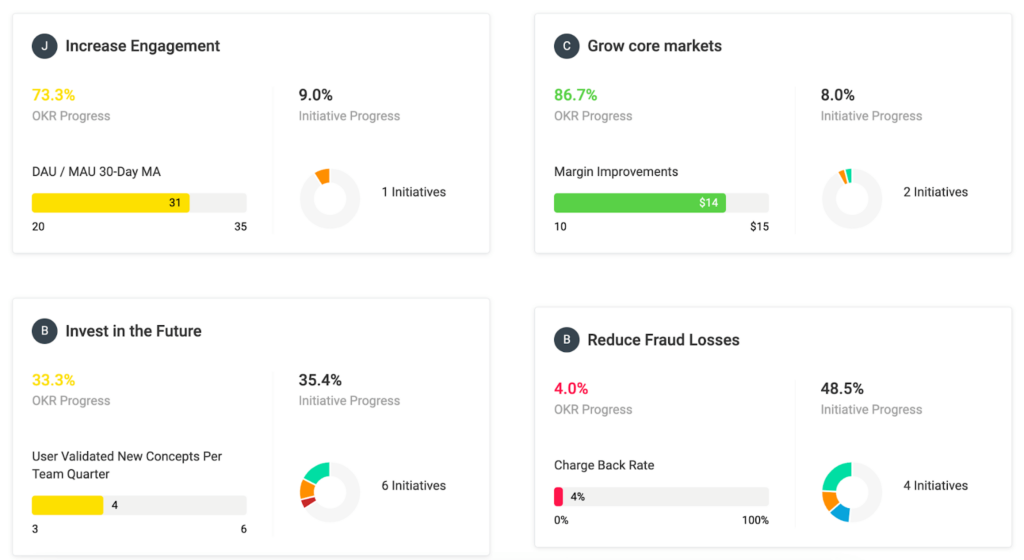There comes a time in every chief product officer’s executive life, when she is asked to interact with the board. Shelley Perry, CEO and founder of Scalelogix Ventures, multiple-time board director, and former Chief Product Officer (CPO), joined Dragonboat’s CPO Series to talk about why new CPOs should adopt a board practice to be ready for the inevitable and tips to ensure you nail your board presentation.
Effective communication with the board increases board member confidence in the entire executive team, and speaking as a member of many boards, Shelley wants new Chief Product Officers to be successful in their new role.
In this webinar, Shelley offers five tips to help CPOs be ready for working with their board.
Tip #1: Understand Your Audience (the Board Members)
Product teams are great at understanding customer jobs, pains, and gains. It’s how they can build great products that create value for customers.
Shelley recommends that CPOs should leverage this capability for knowing customers to understand board members. Board members are stakeholders of the business. They have jobs to do, pains to resolve, and gains they want to help the company achieve.
Chief Product Officers should dig into board member profiles, so they can better understand what they are trying to accomplish as a board member of the company.
Tip #2: What Got You Here Won’t Get You There
“You lead product, but your team is the c-suite,” says Shelley to new Chief Product Officers. The product team is no longer your first team, so you need to stop thinking that way. Boards expect the executive team to be solving for the whole, not advocating for their respective functions. The Five Dysfunctions of a Team is required reading for all new CPOs (any new CxO) because it will accelerate your mindset shift to first-team thinking.
“You [Chief Product Officer] lead product, but your team is the c-suite.”
Shelley Perry, CEO and founder of Scalelogix Ventures & former Chief Product Officer
Tip #3: Your Product Section [of the Board Deck] is Part of a Larger Narrative
When a Chief Product Officer is asked to create the product section of the board deck, the board is not looking for the right product roadmap or update on the status of product initiatives. The only purpose of the product slide is to support the CEO’s narrative for the entire company strategy.
Shelley suggests that the Chief Product Officer first understand the CEO’s narrative, then build the product slides with that context.
Tip #4: Learn to Talk Financial Speak and Leave Product Speak at the Door
As much as you want to, you cannot use any of the following language in board meetings: new UX, code refactor, technical debt, jobs-to-be-done, next release, PRD, Horizon 1, 2, OR 3, framework, prioritization, double diamond strategy.
Leave these terms at the door.
In order to nail your board presentations, translate product changes into language that furthers the business. Use language that communicates how the product will increase sales, retain customers, increase EBITDA, expand into new markets, exit low-growth markets, or otherwise, increase go-to-market velocity. Chief Product Officers need to learn the board’s language, not teach them products.
Tip #5: A Picture is Worth a Thousand Words
Shelley will tell you that her pet peeve as a board member is a slide that shows current state, which begs the question, “Is this better or worse than last month/quarter/year?”
Don’t make board members go back to previous decks to piece things together. Show dashboards with trends or data over time to spark a conversation about what can be done to make a change. You cannot put a thousand words on a slide, but the right dashboard and spark a 20-minute strategic conversation about how to move the entire business forward.
How to Do This in Dragonboat
Chief Product Officers can use Dragonboat to help make the transition to the c-suite easier by relating the progress that the product team is making to the results the company is achieving. The key is to report initiative progress side by side with company results. In Dragonboat, when you display OKR progress next to initiative progress, you can have data-driven, productive discussions in your executive team meetings about strategic investments, resource allocation and strategic initiatives that are moving the business forward.

Such discussions go well beyond what the product team is contributing. The entire c-suite discusses results and initiatives contributing to the results, not going around the room with function-by-function updates. Chief Product Officers who bring this kind of data to executive meetings are living up to Shelley’s advice.
Learn more about how Dragonboat can help you level up your board conversations




